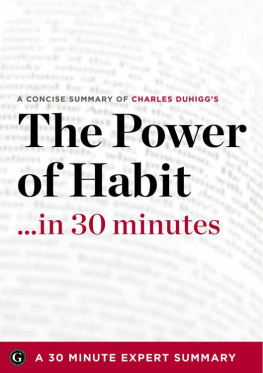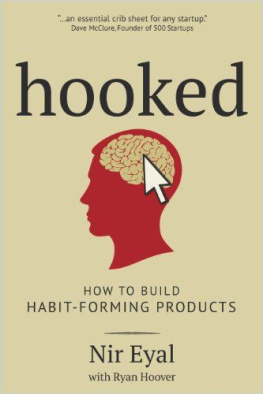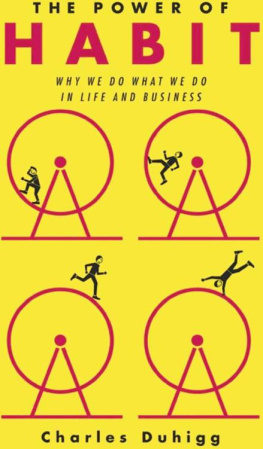Table of Contents
Copyright 2012 by Garamond Press, Berkeley, California
No part of this publication may be reproduced, stored in a retrieval system or transmitted in any form or by any means, electronic, mechanical, photocopying, recording, scanning or otherwise, except as permitted under Sections 107 or 108 of the 1976 United States Copyright Act, without the prior written permission of the Publisher. Requests to the Publisher for permission should be addressed to the Permissions Department, Garamond Press, 918 Parker St, Suite A-12, Berkeley, CA 94710.
Limit of Liability/Disclaimer of Warranty: The publisher and the author make no representations or warranties with respect to the accuracy or completeness of the contents of this work and specifically disclaim all warranties, including without limitation warranties of fitness for a particular purpose. No warranty may be created or extended by sales or promotional materials. The advice and strategies contained herein may not be suitable for every situation. This work is sold with the understanding that the publisher is not engaged in rendering medical, legal, or other professional advice or services. If professional assistance is required, the services of a competent professional person should be sought. Neither the publisher nor the author shall be liable for damages arising herefrom. The fact that an individual, organization or Web site is referred to in this work as a citation and/or a potential source of further information does not mean that the author or the publisher endorses the information the individual, organization or Web site may provide or recommendations they/it may make. Further, readers should be aware that Internet Web sites listed in this work may have changed or disappeared between when this work was written and when it is read.
For general information on our other products and services or to obtain technical support, please contact our Customer Care Department within the U.S. at (866) 744-2665, or outside the U.S. at (510) 253-0500.
Garamond Press publishes its books in a variety of electronic and print formats. Some content that appears in print may not be available in electronic books, and vice versa.
UNOFFICIAL: This summary book is unofficial and unauthorized. This book is not authorized, approved, licensed, or endorsed by Charles Duhigg or Random House Publishing Group.
TRADEMARKS: Garamond Press and the Garamond Press logo are trademarks or registered trademarks of Callisto Media Inc. and/or its affiliates, in the United States and other countries, and may not be used without written permission. All other trademarks are the property of their respective owners. Garamond Press is not associated with any product or vendor mentioned in this book.
ISBNs
978-1-62315-008-2 Print
978-1-62315-009-9 eBook
INTRODUCTION
Overview
The Power of Habit by Charles Duhigg takes a seemingly humdrum topic the formation of habits and demonstrates how powerful they are in driving our behavior at several different levels on a personal basis, in business and government, and socially.
The central thesis of the book is that, through understanding habit formation and operation, we can re-form habits into healthier and more productive patterns.
Duhigg unpacks the latest scientific research, utilizing case studies along the way to demonstrate the powerful impact that harnessing habit can have. He shows how corporations anticipate and target consumer behavior, how social and religious movements marshal followers, and how governmental and health institutions transform groups and culture. Finally, he explores how individuals can radically transform their lives by replacing detrimental habits with positive ones.
In short, this is a practical, easy-to-read book for anyone interested in understanding the formation and impact of habits.
About the Author
Charles Duhigg is an investigative reporter for The New York Times , the winner of several prestigious awards (including the National Academy of Sciences and National Journalism awards), and is a frequent contributor to PBS NewsHour and Frontline, as well as several other programs.
How the Book Came About
Duhigg became interested in the science of habits while reporting from Baghdad during the Second Gulf War. During his time there, he realized that a key component of U.S. military operations is the formation of habit. Good habits are, after all, what keep soldiers alive. Duhiggs observations were more nuanced than this, though. He noticed that certain officers intuitively understood habit to a greater degree, recognizing not only those of their own soldiers, but also those of Iraqis and of violence-prone mobs. This appreciation for habit enabled these officers to better impact the outcomes of situations. At this point, Duhigg realized how powerful habit is and decided to explore the topic in a broader context.
Whats the Big Idea?
Driving Duhiggs contention that habits shape our lives at many different levels is a simple but compelling idea: The will to believe is the most important ingredient in enacting change in our lives, and this will is created and supported through habits. In other words, through changing a habit, change becomes real.
But this isnt simply another book about personal change. Duhigg additionally demonstrates how the power of habit can be a tremendous and positive force in shaping corporations (Alcoa), social movements (the Civil Rights Movement of the 1960s), and government (the Office of Budget and Management).
Breakdown of the Big Idea
Thanks to scientific research, we now not only know that habits are powerful actors, but also understand how they are created. This process is called the Habit Loop, and it looks like this:

The Habit Loop
In basic terms, a Cue is a trigger that sends your brain into automatic mode and tells it which habit to use. A simple example is the act of smelling freshly baked cookies.
This aroma may trigger a Routine, which can be physical, emotional, mental, or a combination of the three. In the case of smelling cookies, the routine may be to go buy one.
This results in a Reward , which helps your brain figure out if a loop is worth following. In the cookie scenario, the reward is the satisfaction of hunger, whether real or perceived. Of course, this routine can result in weight gain over time and the formation of a bad habit.
Duhigg points out that there is a golden rule of habit change: You cant extinguish a bad habit; you can only change it! This explains why bad habits are sometimes very difficult to change, no matter how good our intentions are.
CHAPTER SUMMARIES
Prologue: The Habit Cure
The Big Idea
In the prologue, Duhigg states the theme of his book: Habits can be changed if we understand how they work. He applies the principles of habit-change not only to individuals, but to businesses, social movements, and government institutions as well.
Breaking Down the Big Idea
Using the latest scientific research, Duhigg argues that we know how habits emerge, how they change, and how to break them into parts and rebuild them to our specifications. He divides the book into three sections:
- Section 1 focuses on how habits emerge within individual lives.
- Section 2 examines the habits of successful companies and organizations.
- Section 3 looks at the habits of society.
At the end of the prologue, Duhigg lands on a positive note: Changing habits isnt always easy, but it is more possible than ever before due to groundbreaking research on the subject.
Chapter Summary
In his prologue, Duhigg introduces the power of habits (and the ability to change them) through the personal examples of Lisa (a woman who effected remarkable change in her life) and an Army major in Iraq who learned how to peacefully disperse angry crowds through an intuitive understanding of habits.
Next page







